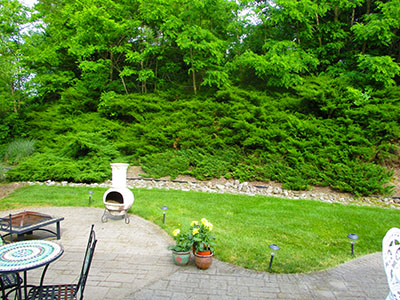
As you spend time this winter thinking about the improvements you’re going to make to your senior garden this season, consider adding groundcover as one of your options. After all, your primary adaptive gardening objective should be to work less in your garden and enjoy it more.
Let’s start by defining groundcover. In her book, Groundcover Revolution, author Kathy Jentz defines groundcover, narrowly as “a plant that spreads across the ground and only grows a few inches high.” She then goes on to broaden the definition to include “any plant that covers the soil in a fairly dense manner.”
One way to simplify your senior garden is to rip out your lawn. The question that always arises is: “What do I replace it with?” The answer is groundcover. That sounds very simplistic, and it is. I recommend thoroughly researching the different types of plants available to you, their environmental requirements, sustainability, local availability and cost.
In addition, Jentz recommends that you check with local authorities or your homeowners association (HOA) to be sure there are no local ordinances, HOA rules or other restrictions to doing what you plan. She also suggests that you advise your neighbors of your plans so they won’t be shocked by your radical transformation.
If you plan to replace your whole lawn, consider a carpet of moss. Talk to one of your garden center horticulturists to be sure your selection will grow in your landscape. Mosses prefer partial sun to full shade, making it a poor choice if the lawn you’re replacing’s in full sun all day. Mosses also prefer moist, slightly acidic soil. My soil is basic clay, making moss a poor investment. Pictures of mondo grass look nice, too, but it’s hardy in zones 6-10 and likes well drained soil. Not a good investment in my zone 5, clay soil environment. These examples are why due diligence is essential.
You don’t have to replace the whole lawn. You can reduce your mowing time and increase your safety by replacing turfgrass with a low growing, fast spreading ground cover in hard to mow areas like slopes, swales, shady spots. This may be a better idea than replacing the whole lawn if you still want some turf. The photo below shows the juniper on the hill behind my house.
Another work-reducing idea is to reduce to amount of turfgrass you have to care for with planting beds of taller, blooming groundcover. This doesn’t have to be done all at once. You can create one bed and see if you like it. If you do, then create other groundcover beds as time, endurance and budget allow.
Groundcover Revolution has plant profiles for 40 plants that qualify as groundcover. This section includes low growing plants that we think of as groundcover like pachysandra (of course), stonecrop, lambs ear, hostas, sedum and strawberries. There are several with creeping in their name like creeping jenny, creeping phlox, creeping juniper, creeping rosemary creeping thyme and creeping raspberry.
Some plants that are taller and flower also qualify as groundcover. They include Black Eyed Susans, coneflowers, prickly pear cactus, bugleweed, hardy begonia, lily-of-the valley, hellebore, huchera and coral bells. Sedge and ornamental grasses also make good accent plants in a groundcover planting bed. The photo above is a groundcover bed in my front yard. It includes ornamental grass, Black Eyed Susans, creeping phlox and a yucca. It was installed before the Groundcover Revolution book was written.
These are just a sampling of plants that qualify for groundcover. Besides profiling plants, the book also gives you design ideas, making it well worth the investment. Another book you’ll want in your library is my critically acclaimed book, The Geriatric Gardener: Adaptive Gardening Advice For Seniors. Order your copy at https://thepancoastconcern.com/the_geriatric_gardener
